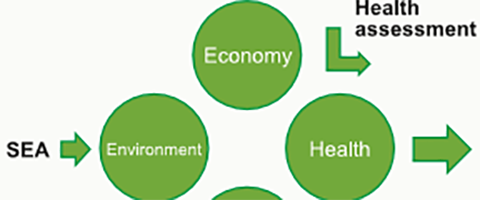

A large proportion of hazy days in 2013 raised intense debate about air pollution and the ties between this haze and the current unreasonable energy mix. This allowed Chinese policymakers to re-examine their past energy policy decisions, and throughout the year a series of energy-related policies were issued to improve the serious air pollution problems. These measures led to the decrease in Beijing’s PM2.5 levels from an average of 88 μg/m3 in 2013 to an average of 73 μg/m3 in 2016, but there is uncertainty as to whether or not Beijing will be able to achieve its commitment to lowering the average level to only 60 μg/m3 in 2017[1]. At the current rate, it is believed that the air quality in Beijing will reach the nationally required standard of 35 μg/m3 by 2030, but future pollutant control may become more difficult, and emissions reductions are not certain if China does not take more ambitious emission reduction strategies, threatening a postponement of the date by which the national standards will be met.
Even if the national standard is met in 2030, we cannot fully determine that this will create a healthy environment in which we live, provide clean air for people to breath, or create social justice. The link between the establishment of energy policies and air quality standards alone may largely overlook the breadth and depth of the health and social impacts of the problem of air pollution. Thus the development of future energy policy requires more comprehensive and systematic planning in order to meet the balance between energy supply and social impacts.
China’s Current Energy Policy Lacks Inclusive Impact Assessment Tools
However, current Chinese energy policy does not comprehensively consider environmental, social and health impact assessments in the production and consumption of energy. For example, the most recent Five-Year Energy Development Plan and the Energy Development Strategy Action Plan discussed environmental protection quite a lot, but lacked an explanation on how to systematically assess the potential environmental impacts of energy planning and how to mitigate these impacts. The current impact assessments related to energy policy formation are the strategic environmental impact assessment and the planning environmental impact assessment. Other impact assessment tools have not really been developed at policy level. There are only a few examples of these practices being used in specific energy construction projects, such as the implementation of a social impact assessment of large hydropower project.
Through observing the current energy policy formation and implementation processes, we believe that there is room for improvement in the areas such as strengthen the role of strategic environmental impact assessment in energy policy-making, how to take health impacts into full consideration, considering impact assessments of imported and exported energy products and so on.
The Road to More Inclusive Energy Policies in China: Effective Use of Impact Assessment Tools
In general, many impact assessment tools such as Social Impact Assessment (SIA), Health Impact Assessment (HIA), Regulatory Impact Assessment (RIA) have just been applied in China or have not really started. The formation of a comprehensive framework of impact assessment tools will face many challenges, such as institutional systems and mechanisms, and professional knowledge, amongst other challenges. Based on the above analysis, we suggest that the energy policy development process considers putting a comprehensive Impact Assessment system on the agenda, enhancing the energy sector’s cooperation with other relevant sectors, using both qualitative and quantitative methods, emphasizing social impact assessments’ emphasis on employment and SMEs development.
How impact assessment tools can be used in energy policy decision-making process Source: Adapted from European Commission’s “Impact Assessment Guidelines”
Source: Adapted from European Commission’s “Impact Assessment Guidelines”
Conclusion
China’s energy policy decisions for the smooth transition of the energy system to a renewable based system are crucial to determine whether we can breathe clean air soon, whether the employment in the energy sector can have a smooth transition, and whether social investment can be more efficient. There are many challenges in this process, which in turn require our energy policymakers to develop innovative and inclusive solutions that take into account the potential impacts of different energy supply and use processes, and improve effective collaboration across sectors. Comprehensive use of impact assessment tools can present such a solution to policy makers, improving the rationality of decision-making and the effectiveness of regulation.
However, impact assessment tools only serve as an aid to decision-making, and are not a substitute for policies. The most important influence of impact assessment tools on policy makers is that they can assess different factors to make rational decisions, taking each aspect of the problem into account.
References
[1]China Air Quality Management Assessment Report (2016), China Clean Air Alliance. Available at: http://www.cleanairchina.org/product/7963.html
Author : Lin Jiaqiao




